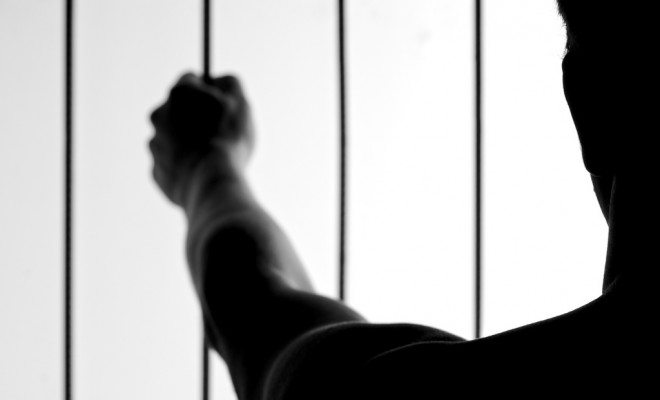 Image courtesy of [Niklas Morberg via Flickr]
Image courtesy of [Niklas Morberg via Flickr]
Crime
Does Juvenile Incarceration Actually Work?
Incarcerating teens–a punishment that is meant to prevent crime–often tends to push youth away from schools and into even more crime. This revelation comes from a recently published study in the Quarterly Journal of Economics, which found a new connection between juvenile incarceration and troubles later in life. The study’s conclusions might not come as a surprise, but it helps explain an all-too-familiar pattern in which offenders return to prison shortly after their release. These findings also point to a larger question: is it time to abandon juvenile incarceration for other alternative methods such as counseling and restorative justice?
In the study, researchers examined the outcomes of more than 35,000 juvenile offenders in Chicago over a 10-year period. They found that incarceration lowered graduation rates by 13 percent and increased the chance of adult incarceration by 23 percent. The incarceration of these juveniles, especially those around the age of 16, significantly decreased the likelihood that they would return to school and graduate.
Researchers compared groups of juveniles who–for the same offense–received either an incarceration sentence or some alternative form of punishment. Doing so helped the researchers understand the direct effects of incarceration, particularly because the likelihood of such a punishment varies between judges. Joseph Doyle, who co-authored the study, further explained this point in a press release,
Some kids get a judge who will place them in juvenile detention, other ones get a judge who will be less likely to do so, and comparing the outcomes of the kids across the judges, we can actually say what the causal outcome is of placing the kids in juvenile detention.
Doyle believes that during periods of incarceration, teens meet others who are in trouble, which could lead them to form social groups that are not beneficial to already struggling juveniles. Doyle also says that, “there could be a stigma attached to it, maybe you think you’re particularly problematic, so that becomes a self-fulfilling prophecy.” This is known as labeling theory in the criminology world, where an offender’s actions are influenced by the way he is described and classified. Labeling theory argues that by incarcerating an individual, he begins to see himself as a criminal and will likely commit more crimes in the future.
Juvenile incarceration creates a vicious cycle where an incarcerated teen eventually becomes imprisoned as an adult, which can often lead to the loss of federal assistance benefits such as loans, food stamps, and welfare. As a result, they have a harder time finding a job, which further incentivizes crime as a source of income. With 75 percent of state prisoners and 69 percent of federal prisoners having not finished high school, education seems essential to preventing criminal offenses. Incarcerating teens takes them out of school and dramatically increases the likelihood that they will not return later on.
In light of this research, alternative measures to combating juvenile delinquency might be the wave of the future. Alternatives like restorative justice, which focuses on repairing harm caused by the offender instead of simply punishing him, have already proven to be effective in combating delinquency.
A restorative justice program often involves both the offender and the victim through counseling, victim-offender conferencing, restitution, and community service. In victim-offender conferencing, both parties are encouraged to discuss their issues in the hopes of finding a resolution and punishment. This is often a more attractive alternative to putting the punishment and resolution process in the hands of a judge, who might be inclined to incarcerate the offender. Restitution simply involves showing remorse and paying the victim back for what was taken.
For more information on restorative justice check out Law Street’s explainer.
In an effort to find an alternative to juvenile incarceration, Barron County, Wisconsin Circuit Court Judge Edward Brunner helped form what would become the Barron County Restorative Justice Program back in 2000. The program employed incarceration alternatives including victim-offender conferencing and teen court, both of which gave juvenile offenders the opportunity to make things right with their victims and the community.
By 2007, Barron County saw a dramatic decrease in juvenile offenses relative to the rest of the state. Barron County’s juvenile arrest rate was 34.2 percent lower in 2007 than it was in the year before the program’s inception, meanwhile the rest of the state only saw a 21.7 percent decrease in the same time span.
Other places, both inside and outside the United States, also experienced decreases in juvenile crime after implementing restorative justice programs. New Zealand saw drastic reductions in juvenile offenses and recidivism after instituting a similar system, and its satisfaction rates among the victims and offenders rose as high as 90 percent.
This recent study shows that juvenile incarceration may not be the best solution for deterring future crime. Kids who are introduced to the juvenile prison system tend to commit more crimes and carry their high recidivism rates into adulthood, and as a result, the vicious cycle of a “career criminal” begins to emerge. If the goal is to prevent crime and help juvenile offenders, perhaps it is now time for society to seek an alternative to incarceration.








Comments